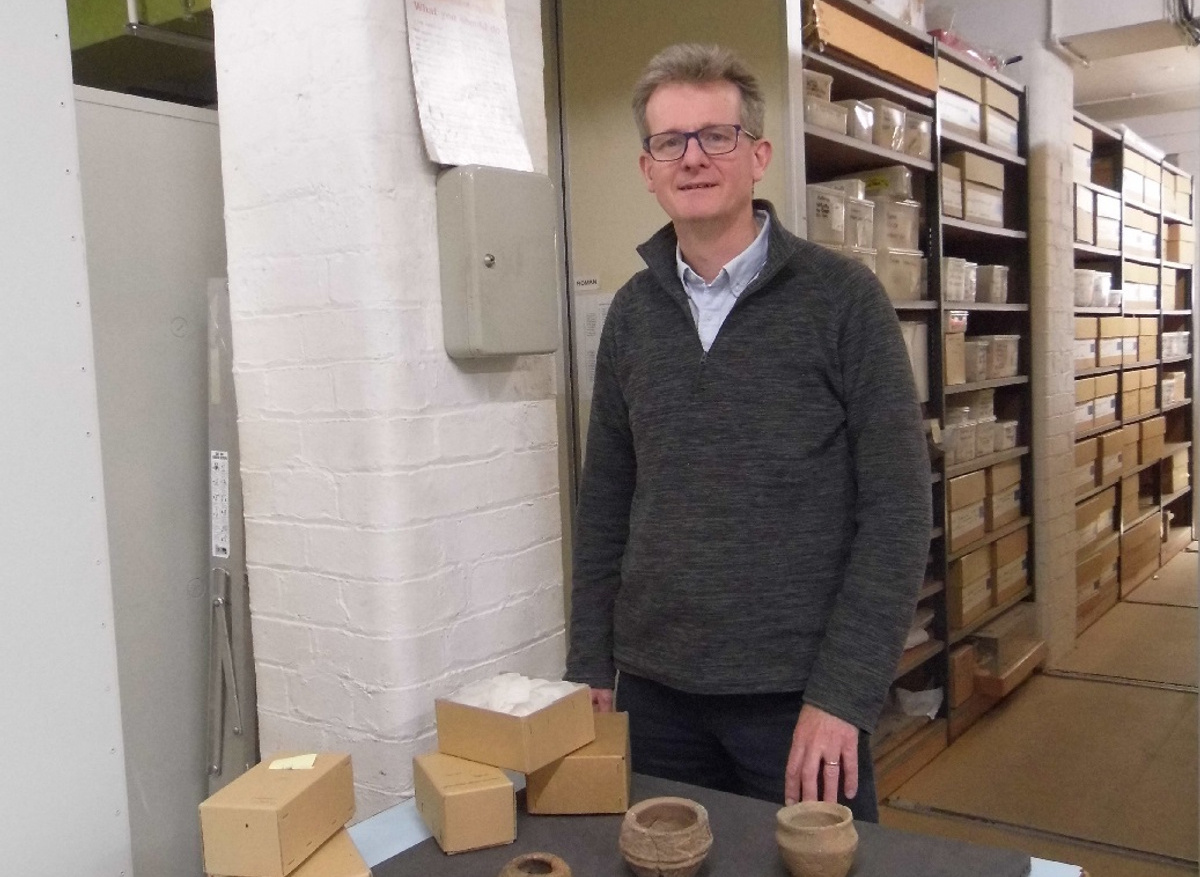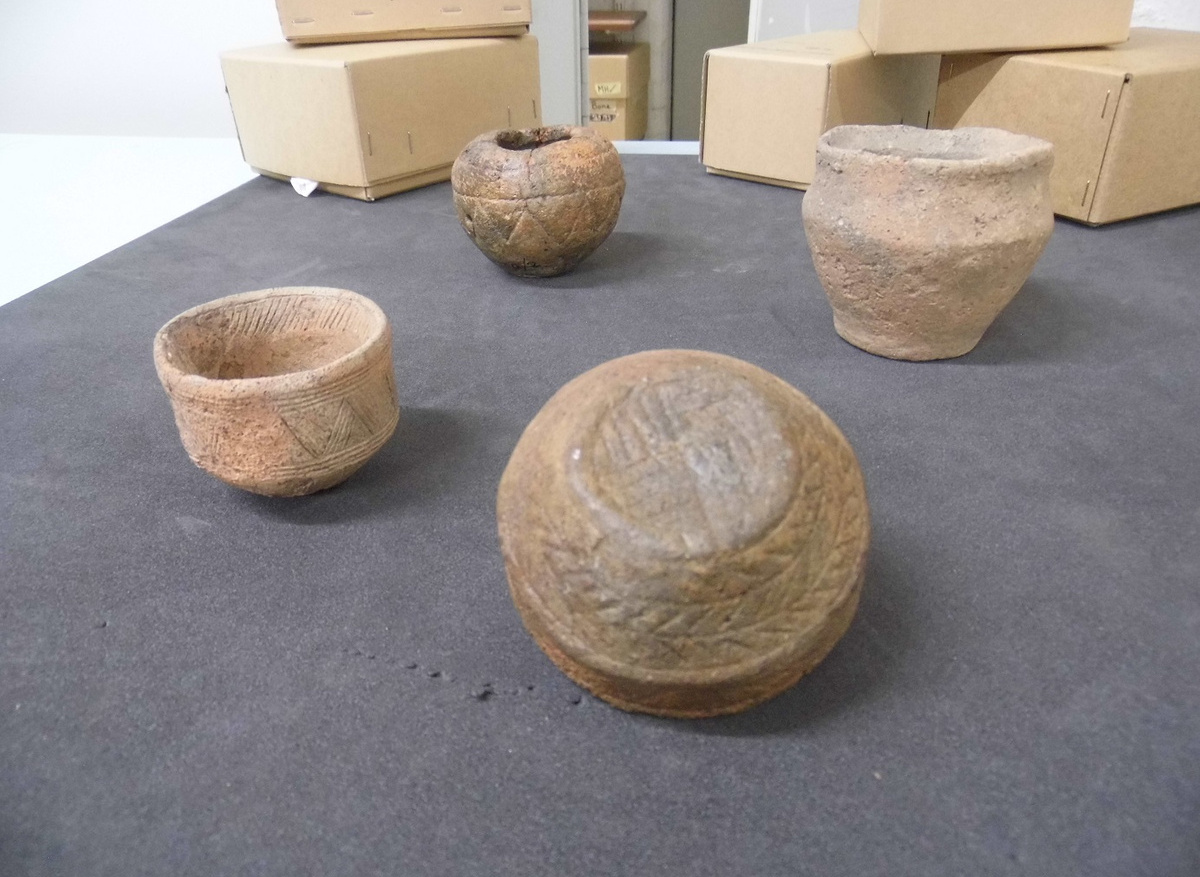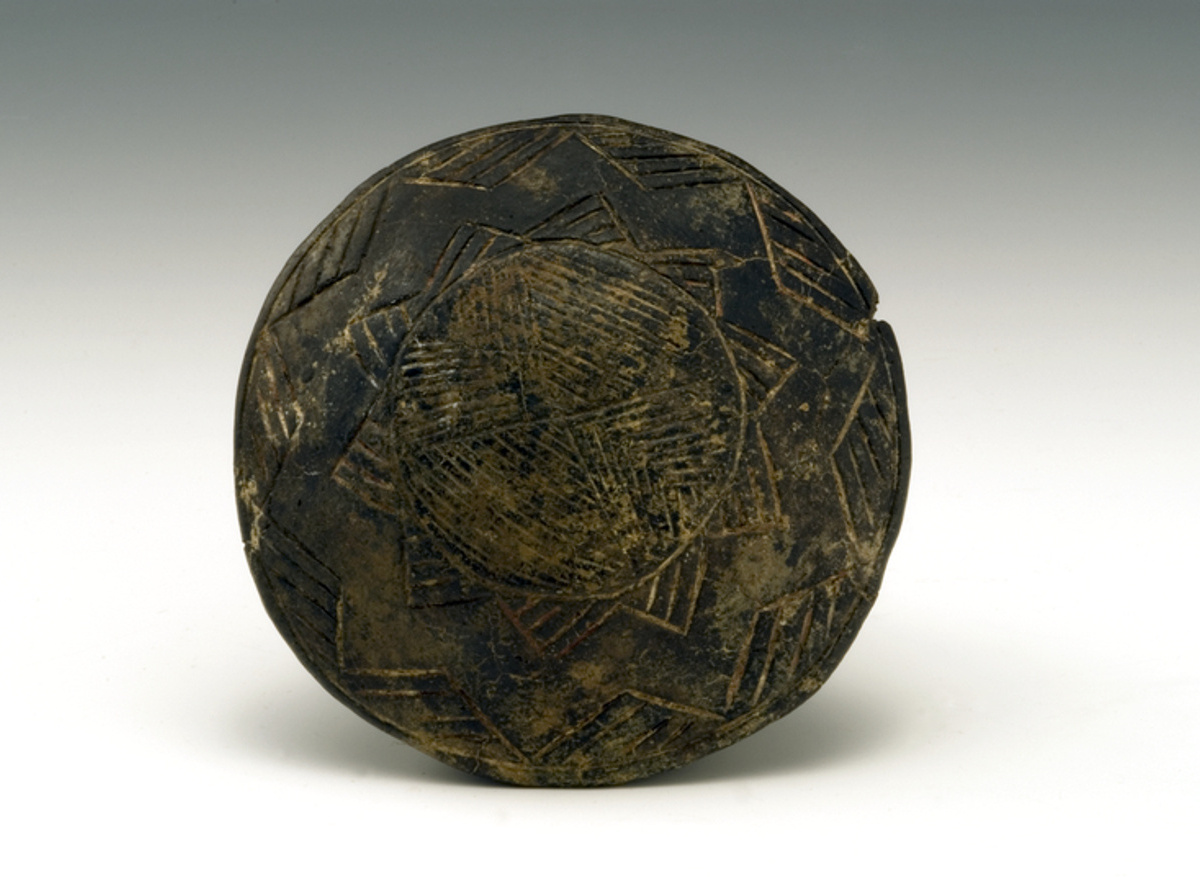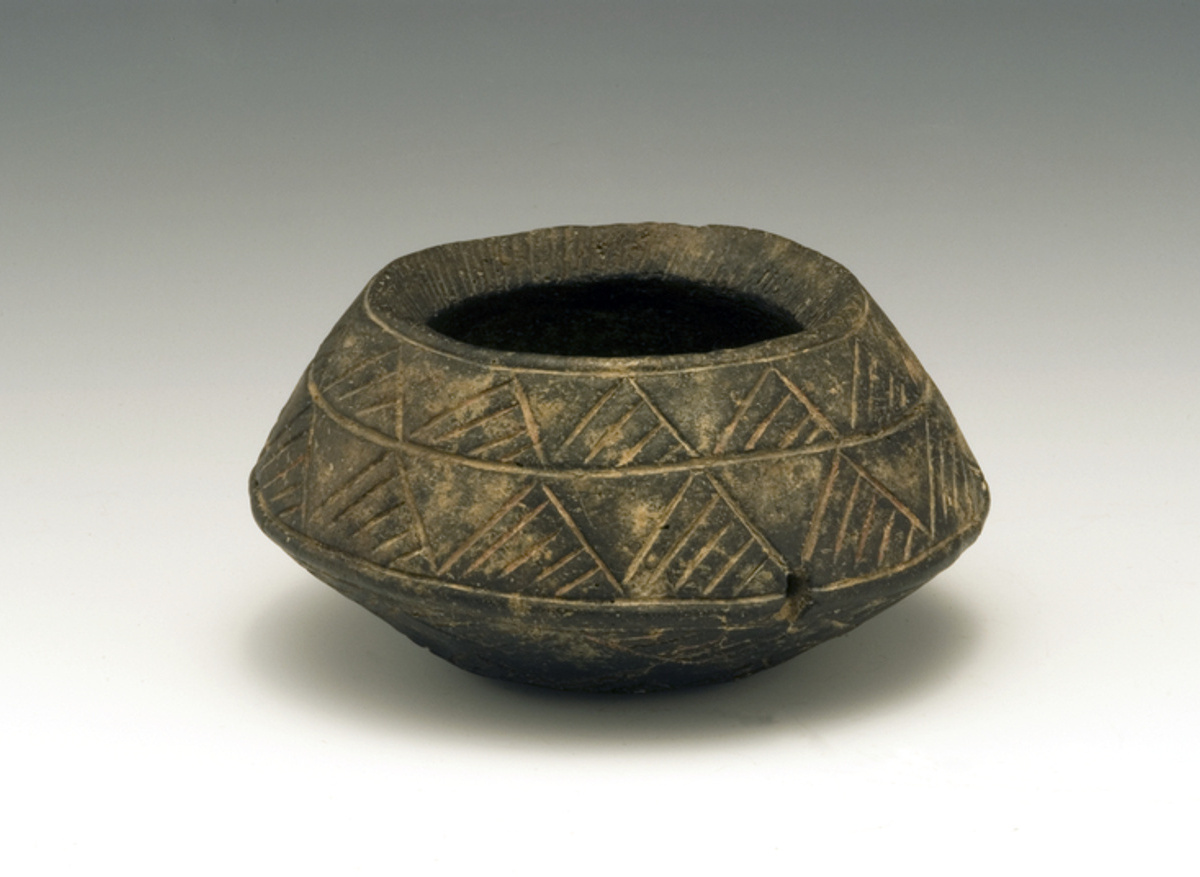My Day in Archaeology posting is about my current work preparing for a public event being held on 24th July at St Fagans: National Museum of History, as part of our contribution to the Festival of Archaeology during 2024. Visitors will be able to make and decorate hand-made clay cups with reference to some of our 4,000-year-old prehistoric cups, held in the national collection. I will be there on the day as one of the team, together with maker Steve Burrow and conservator Louise Mumford, two of my colleagues.
As the curator for the prehistory collections, my work at Amgueddfa Cymru is very varied. I develop and care for this collection and engage with the public, other museum and heritage professionals and researchers in many varied ways to make the collection accessible and relevant. I also undertake research projects, publishing on aspects of Welsh prehistory to enhance our understanding of the collection. Each year, I report to coroners on around fifteen prehistoric treasure cases now found and reported in Wales. Typically, this involves working on newly discovered groups of Bronze Age weapons and tools and finds of gold ornaments.
Small cups are intriguing and intimate decorated objects: they were made in the Early Bronze Age and accompany cremation burials as carefully selected grave-goods. Sometimes they are found contained within other larger ceramic burial urns or associated with artefacts of bronze, flint, stone and animal bone, however they may be found as single artefacts accompanying the human burial. Archaeologists continue to puzzle over their use and meanings, but they were clearly special objects, chosen by grieving communities to accompany their loved ones in the grave.
Looking more carefully at them, these small vessels often have sun-like designs on their bases, as if these were how they were meant to be seen. They also often have a pair of holes carefully made through their sides, perhaps to suspend from twine or cord, or maybe linked in some way with their use during the funerary and cremation ceremonies. Suggestions about their use have included their use as cups for medicine or alcohol, as personal and experimental ‘apprentice-piece’ gifts and as incense burners or lamps.
One of our cups, from Whitford in Flintshire, has been found to contain a residue made up of a series of wax esters and alcohols. This signature is consistent with once having contained beeswax, suggesting this cup was perhaps used as a lamp burning the wax. Researcher and conservation analyst Dr Mary Davis has also identified, through a range of analytical techniques, that the incised decoration on many of our cups contains carefully placed infills. The stunning biconical cup from Breach Farm, Llanblethian in the Vale of Glamorgan has been fired to create black external surfaces and its radial incised decoration was found to be coloured with alternating red ochre and burnt white bone zones. This has raised the very human possibility that ground bones of the ancestors may have been incorporated into these ‘meaningful’ vessels.
Having looked through the cups currently in our store and not on display, I have selected a varied group of examples for our participants and budding potters to see and engage with. We will provide a range of resources to encourage creativity and experimentation, as people have a go at making and designing their own special cups. I will be responding to questions and feeding back information and stories linked with these ancient artefacts on the day. Let’s hope we will enable and encourage some lasting connections to be made with the potters and people from our shared prehistoric pasts!






